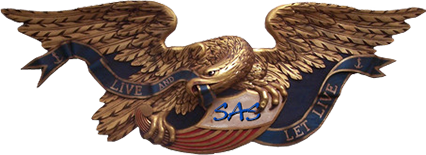One of missing planes of WWI, it´s not so powerfull and so good but important:
 http://www.wikiwand.com/en/Pfalz_D.III
http://www.wikiwand.com/en/Pfalz_D.IIISpecifications (D.IIIa)
Pfalz D.III drawing
Pfalz D.III drawing
Data from German Aircraft of the First World War[18]
General characteristics
Crew: 1
Length: 6.95 m (22 ft 10 in)
Wingspan: 9.4 m (30 ft 10 in)
Height: 2.67 m (8 ft 9 in)
Wing area: 22.17 m2 (238.6 sq ft)
Empty weight: 695 kg (1,532 lb)
Gross weight: 933 kg (2,056 lb)
Powerplant: 1 × Mercedes D.IIIa 6-cyl. water-cooled in-line piston engine, 130 kW (180 hp)
Performance
Maximum speed: 165 km/h; 89 kn (102.5 mph) at 3,048 m (10,000 ft)
147.3 km/h (92 mph) at 4,572 m (15,000 ft)
Endurance: ca. 2½ hours
Service ceiling: 5,182 m (17,001 ft)
Rate of climb: 3.67 m/s (722 ft/min)
Time to altitude:
1,524 m (5,000 ft) in 6 minutes 55 seconds
3,048 m (10,000 ft) in 17 minutes 30 seconds
Armament
Guns: 2 × 7.92 mm LMG 08/15 "Spandau" machine guns





.jpg)

Operational history
Pfalz D.IIIa (serial 8413/17) flown by Oberleutnant Walter Ewers of Jasta 77b. The aircraft displays hastily applied Balkenkreuz markings
Pfalz D.IIIa (serial 8413/17) flown by Oberleutnant Walter Ewers of Jasta 77b. The aircraft displays hastily applied Balkenkreuz markings
Deliveries to operational units began in August 1917. Jasta 10 was the first recipient of the new aircraft, followed by Jasta 4. While markedly better than the earlier Roland designs, the D.III was generally considered inferior to the Albatros D.III and D.V. German pilots variously criticized the Pfalz’s heavy controls, low speed, lack of power, or low rate of climb compared to the Albatros.[5][8][9] The D.III slipped in turns, leading to crashes when unwary pilots turned at very low altitudes.[5][10] Moreover, the Pfalz stalled sharply and spun readily. Recovery from the resulting flat spin was difficult, though some pilots took advantage of this trait to descend quickly or evade enemy aircraft.[11]
The Pfalz’s primary advantage was its strength and sturdiness. The Albatros scouts were plagued by failure of their single-spar lower wings.[12] The Pfalz, however, could safely dive at high speeds due to its twin-spar lower wing.[3][13] For this reason, the Pfalz was well-suited to diving attacks on observation balloons, which were usually heavily defended by anti-aircraft guns trained to the balloon's altitude.[14]
D.IIIa
The most pressing complaint about the new Pfalz was that the guns were buried in the fuselage, preventing pilots from clearing gun jams in flight.[4] This feature had been carried over from the earlier Roland designs.[7] In November 1917, Pfalz responded by producing the slightly modified D.IIIa, which relocated the guns to the upper fuselage decking.[4] The D.IIIa was distinguishable by its enlarged semicircular horizontal stabilizer and cropped lower wingtips.[4] It also featured a more powerful version of the Mercedes D.III engine.
Pfalz built approximately 260 D.III and 750 D.IIIa aircraft.[7] Most were delivered to Bavarian Jastas.[15] Once Pfalz completed the final batch in May 1918,[16] production shifted to the D.IIIa's successor, the D.XII. Some aircraft from the final D.IIIa batch were delivered to Turkey.[16]
As of 30 April 1918, 433 D.IIIa scouts were still in frontline use.[17] By 31 August, that number had declined to 166.[17] Many serviceable aircraft were sent to advanced training schools, but approximately 100 aircraft remained in frontline use at the time of the Armistice.
Operators
German Empire
Luftstreitkräfte
Kaiserliche Marine
Ottoman Empire
Ottoman Air Force
 Author
Topic: Pfalz D-III (Read 5257 times)
Author
Topic: Pfalz D-III (Read 5257 times)


